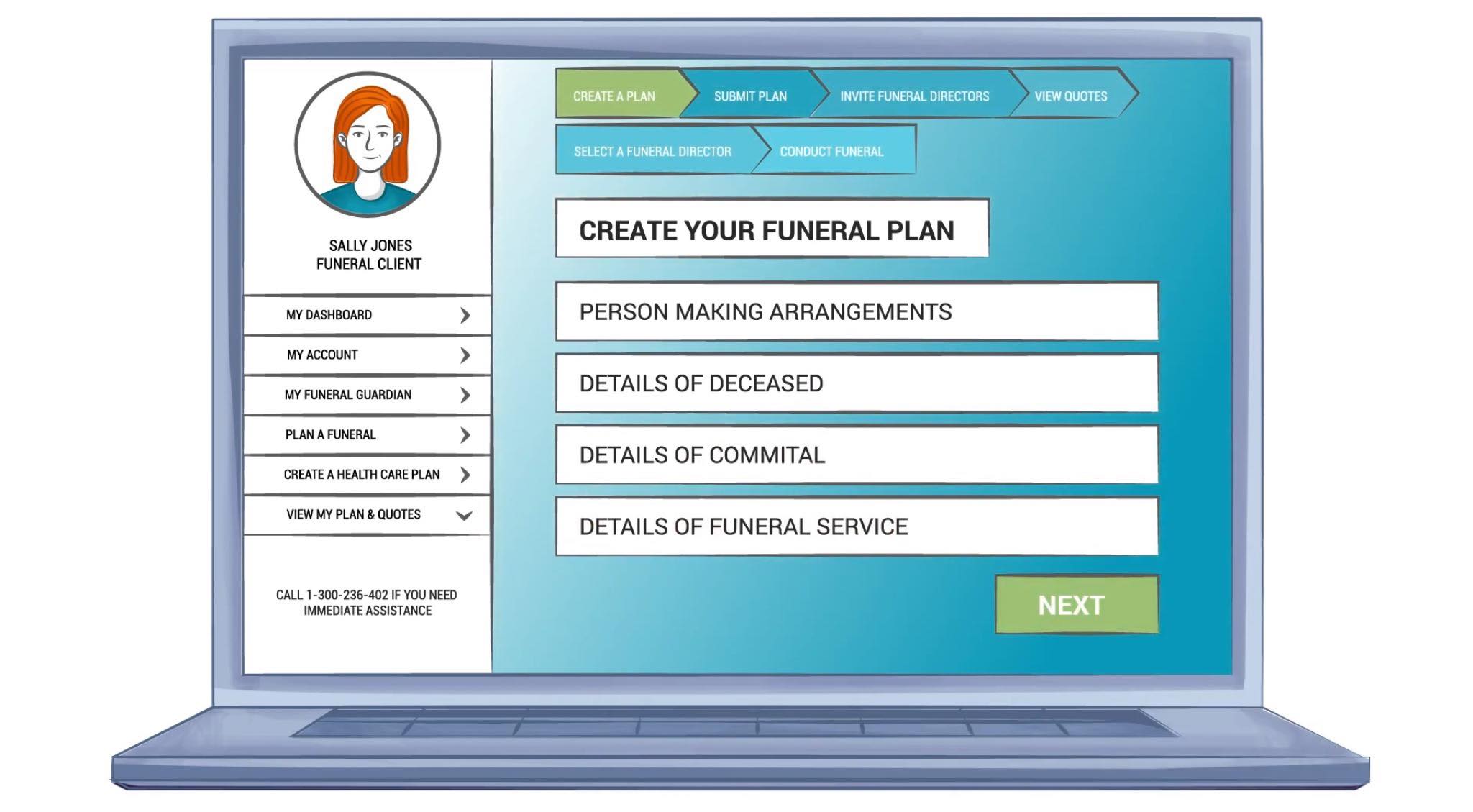What is cremation?
Cremation is the burning of a deceased’s body to reduce it to ashes. This can be contrasted to the traditional burial, where the body slowly decays over many years.
Where does the cremation process take place?
Cremations are performed at crematoriums, which are usually located within cemeteries.
How is the body prepared for the cremation process?
In order to prepare the human body for cremation, it is important that items that could affect or endanger the cremation procedure are removed. This includes rings and watches, as well as pacemakers and other mechanical objects which can explode in the cremator causing very serious damage.
The deceased is then placed in a coffin.
If the cremation is taking place after a funeral service and there are flowers on the coffin, these flowers are removed prior to the cremation. You should speak to your funeral director if you wish to keep the funeral flowers after the funeral service. Flowers can be dried and kept as a memento, placed at the memorial site or taken home.
How is the body transported to the crematorium?
Generally, the funeral director will arrange for transportation of the coffin to the crematorium. Depending on where the funeral service is held, this will either be directly from the funeral director’s mortuary facility or via the chapel or church.
Once the coffin is accepted by the crematorium it remains sealed throughout the cremation process.
How is the identity of the body verified?
Before a cremation can take place, staff at the crematorium must verify the identity of the deceased. They do this by matching the name plate on the coffin to the Application for Cremation document, and the medical certificates or the coroner’s cremation permit received from the funeral director.
When will cremation take place?
Cremations usually take place on the day of the funeral service, but they are legally required to occur within 48 hours of the service. If the cremation does not take place immediately following the service, the coffin is placed in a refrigerated holding room.
How is the coffin placed in the cremator?
When the cremation process is ready to commence, the coffin is placed on an insertion trolley or conveyer belt. Staff remove any metal parts from the coffin – for example, metal handles – and the metal name plate identifying the name of the deceased is placed outside the cremator to allow for identification of the body during the cremation process.
The coffin is then inserted into the cremator. The deceased are always placed into the cremator feet first.
Only one coffin is ever placed in the cremator at any one time.

The cremation process: how is a body cremated?
While not all cremators are the same, the majority are made up of 2 chambers and a cooling tray.
The first chamber is powered by natural gas and built with heat-resistant bricks. This chamber is heated to a temperature between 800-1000 degrees Celsius, and the coffin is then inserted. The heat from the bricks in this chamber causes cremation to occur.
After this, the cremated remains are moved to the second chamber, where the remains are removed from the coffin. Then the remnants are placed into a cooling tray, and metallic contents, such as prostheses and coffin nails, are removed by staff.
Finally, the cremated remains are placed in a cremulator which grinds them into a fine, sand-like consistency. The ashes are put into a sealed container, or into an urn pre-purchased by the deceased’s family.
Do cremation ashes get mixed up?
A common concern for people considering cremation for themselves or for a loved one is whether the cremated ashes get mixed up with the ashes of other people cremated previously in the cremator.
As only one body is permitted to be placed in the cremator at any time, there is no risk that the ashes of your loved one will contain a significant amount of ashes from another person.
This, however, does not mean that there will not be any ashes of another person mixed in at all. No matter how thorough the crematorium operator may be, there is always the possibility that very minute particles of another person may get mixed in with your loved one’s ashes. One way to think about this is to imagine dropping a small jar of sand on the floor and then sweeping this back up. Now imagine dropping a second jar of sand onto the floor and sweeping this sand back up. Regardless of how thorough you may have been in sweeping up, it’s possible that you may have missed a grain of sand from the first jar, or that some very fine dust-like particles from the first jar might get mixed in with the sand from the second jar. In any event, the amount of any mixing would be on a minuscule level.
How long does a cremation take?
An average sized human body is usually reduced to ashes in under 2 hours, while the entire cremation procedure from beginning to end can take up to 4 hours.
There are a number of factors that can affect how long it takes to cremate a body. In particular, larger corpses (i.e. those over 150kg) take longer to cremate and must be carefully managed so as not to pose a fire risk in the cremator. Larger bodies are scheduled first of the day so as to avoid cremating them in a cremation chamber that is too hot.
Can families watch the cremation?
Some crematoriums have a platform to view the committal of the coffin into the cremator. If you would like to watch the committal, speak to your funeral director or the crematorium as to whether this option is available.
What is done with the ashes?
The crematorium holds the ashes until it is picked up by the funeral director or the deceased’s family. If the ashes have not been claimed within a reasonable time, they are interred in the grounds of the crematorium.

About eziFunerals
eziFunerals supports individuals and families cope with end of life decisions, death and funerals. We are an independent, Australian-owned and operated company. We are not part of any other funeral company.
Our member Funeral Directors operate in Sydney, Melbourne, Brisbane, Perth, Adelaide and Australia wide. Thet are chosen for their knowledge, quality, service, personalisation and experience. They go above and beyond, and will take the time to support the family.
For more information or to make contact with a trusted Independent funeral director, call eziFunerals on 1300 236 402 or visit www.ezifunerals.com.au.





